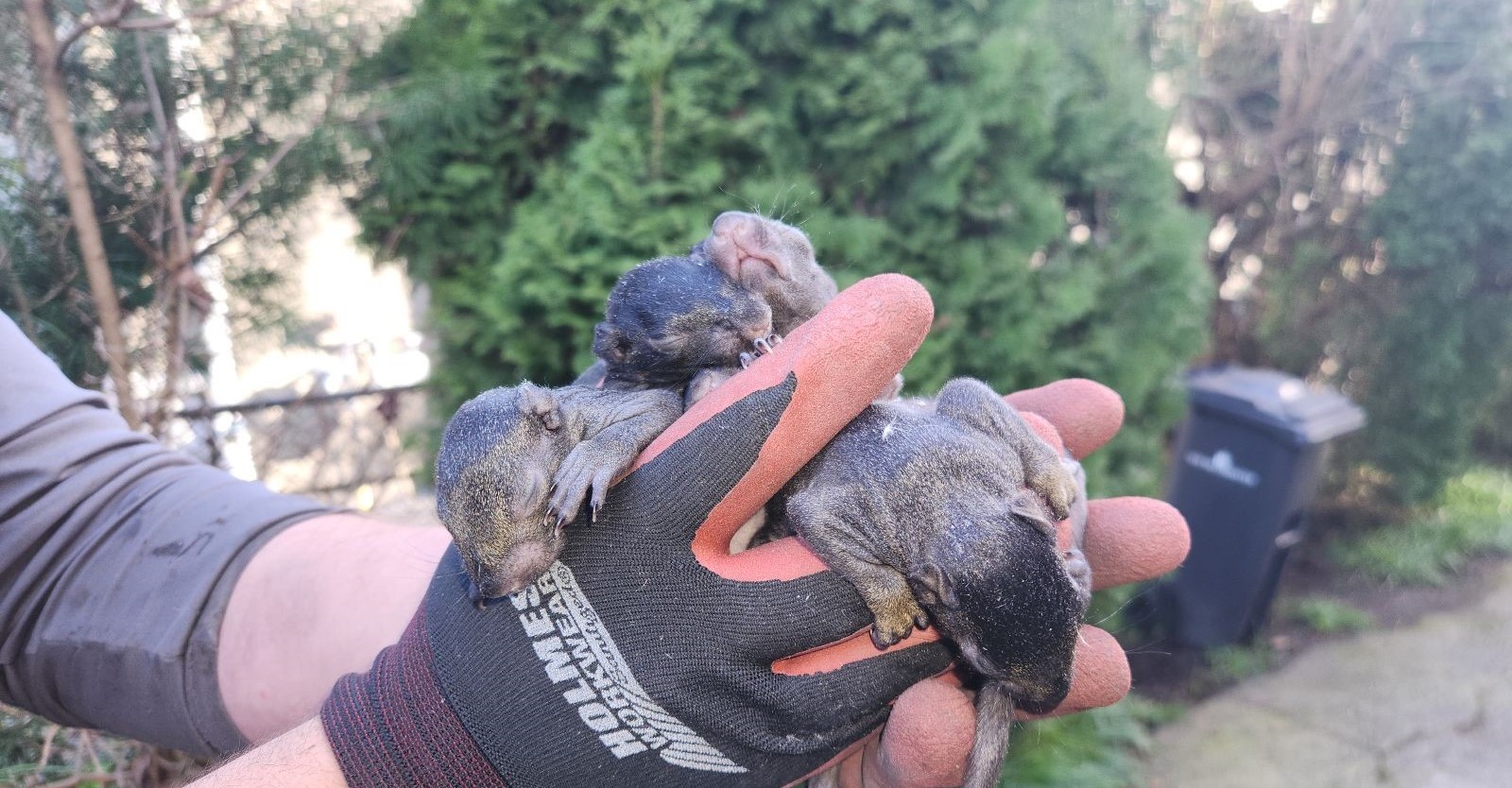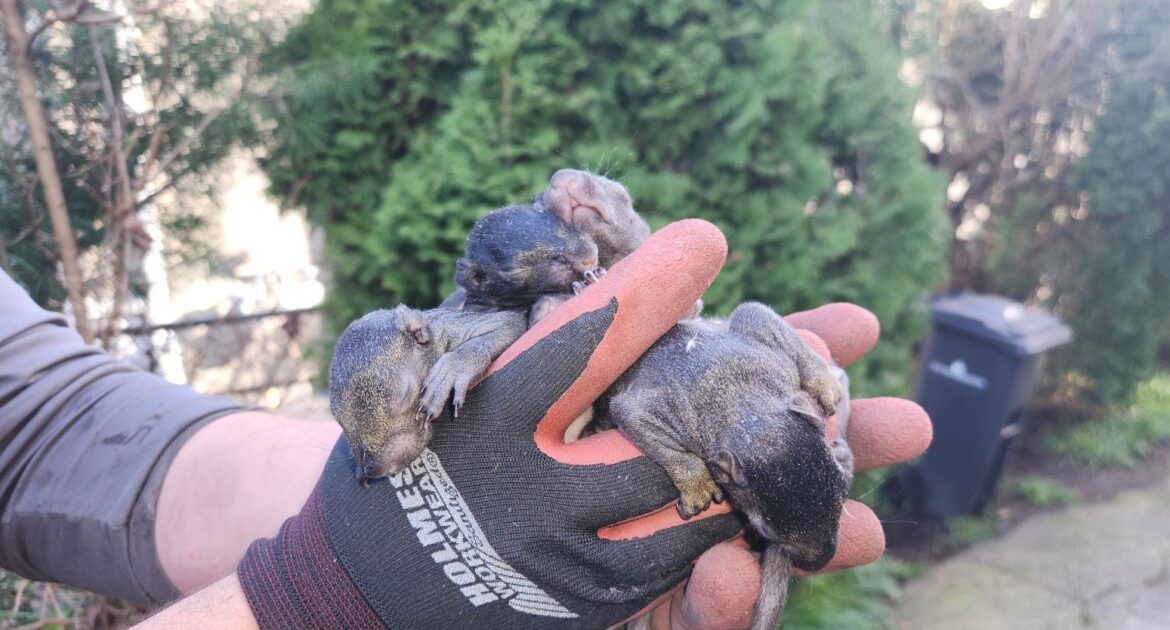Atlanta is full of beautiful neighborhoods, lush parks, and vibrant wildlife. Among its most common residents? Squirrels. These energetic creatures are everywhere—darting through trees, foraging for food, and even popping up in your backyard. Getting to know the squirrel species in Atlanta can help you better appreciate them and live alongside them peacefully.
Whether you’re walking through Piedmont Park or relaxing on your porch, chances are you’ve spotted one of Atlanta’s local squirrels. Learning more about them can make your encounters with wildlife more enjoyable and deepen your appreciation for the city’s ecosystem. Protecting green spaces for creatures like squirrels helps keep Atlanta thriving.
Let’s dive into three common squirrel species in Atlanta—the Eastern Grey Squirrel, Black Squirrel , and Southern Flying Squirrel. Plus, we’ll share tips for spotting their activity around your home and enjoying their presence responsibly.
Eastern Grey Squirrel
The Eastern Grey Squirrel is one of the most common squirrels in Atlanta, easily spotted in parks, backyards, and even busy city streets.
- Appearance: Medium-sized with a gray coat, white underbelly, and bushy tail. They measure 16-20 inches long (including their tail) and weigh just over a pound.
- Where You’ll Find Them: Found in Atlanta’s parks, neighborhoods, and areas with plenty of trees, like Grant Park. They thrive in deciduous forests but easily adapt to urban spaces.
- Behaviors: Known for gathering and burying acorns to save food for later. You’ll often see them darting between trees, chasing each other, or leaping between branches. They can remember dozens of nut locations throughout the year.
Whether in parks or backyards, Eastern Grey Squirrels bring energy and adaptability to Atlanta’s green spaces, making them a familiar and fascinating part of the city’s wildlife.
Black Squirrel
The Black Squirrel is a unique and eye-catching member of the squirrel family, known for its jet-black fur and curious nature. A melanistic variant of the Eastern Grey Squirrel, these striking creatures have become a familiar sight in many of Atlanta’s neighborhoods and parks.
- Appearance: Black Squirrels sport a deep black coat, though some may have a hint of brown in the sunlight. They’re roughly the same size as grey squirrels—typically 16 to 20 inches long including the tail—and just as agile and energetic.
- Habitat: These squirrels are adaptable and thrive in both urban and wooded environments. In Atlanta, they can be found in residential areas with mature trees, local parks, and greenbelt corridors.
- Behavior: Like their grey counterparts, Black Squirrels are active during the day and are often seen chasing each other, foraging for food, or burying nuts for later. They’re generally non-aggressive and tend to coexist peacefully with other squirrels.
With their sleek appearance and playful antics, Black Squirrels are a fun and fascinating part of Atlanta’s urban wildlife. If you’re lucky, you might spot one darting across your yard or leaping from tree to tree during your next outdoor adventure!
Southern Flying Squirrel
The Southern Flying Squirrel is a fascinating yet elusive part of Atlanta’s wildlife. Known for their gliding abilities and nocturnal habits, these small creatures are a unique species worth learning about.
- What Makes Them Special: Southern Flying Squirrels are small with soft gray-brown fur, large dark eyes for night vision, and a flat, wide tail. They use a flap of skin called a patagium to glide between trees effortlessly.
- Habits and Behavior: These squirrels are nocturnal and rarely seen during the day. Their gliding ability allows them to travel up to 150 feet between trees. If you spot unusual movement at night near mature trees, it could be a Flying Squirrel.
- Thriving in Atlanta: They prefer areas with older trees, like hardwood forests or neighborhoods with mature timber. Tree cavities make perfect nesting spots, making Atlanta’s natural areas an ideal habitat.
While spotting a Southern Flying Squirrel might take some patience, their graceful glides are worth the wait. Keep an eye out in tree-filled areas during quiet evenings—you may just catch a glimpse of these remarkable creatures.
Recognizing Squirrel Activity Around Your Home
It’s easy to tell when squirrels are nearby based on the clues they leave behind. One common sign is chewed nuts and shells. Squirrels are experts at cracking open acorns and nuts, and you’ll often find small piles of shells scattered around your yard where they’ve been snacking.
You might also notice tracks and trails. Squirrel tracks are small, with hand-like front paw prints and longer back paws. If there’s light snow or loose dirt, you may spot clear, detailed imprints as they scurry around.
Another giveaway is visible nests. High up in the treetops, squirrels build nests (called dreys) out of twigs and leaves. If you see compact, leafy nests tucked into your tallest trees, a squirrel family is likely calling your yard home.
With Atlanta’s lush tree canopy and mild climate, squirrels thrive in backyard spaces, making them a familiar sight for many homeowners.
How to Appreciate and Protect Atlanta’s Squirrels
Squirrels play a vital role in Atlanta’s ecosystem, making it essential to protect them and their natural habitat. By doing so, we not only help these animals thrive but also benefit the environment as a whole.
One of the simplest ways to support squirrels is to enjoy their company without interfering. While it may be tempting to hand-feed them, doing so can disrupt their natural foraging behaviors. Instead, watch them from a distance and appreciate their playful antics without impacting their routines.
Improving their habitat is another meaningful step Atlanta residents can take. Planting native trees like oak or hickory provides a natural food source for squirrels. Creating a yard filled with a variety of plants doesn’t just help squirrels—it also supports other wildlife, fostering a flourishing ecosystem.
Lastly, it’s important to create safe boundaries to coexist harmoniously with these creatures. Ensuring your home is secure can prevent squirrels from accidentally entering your living spaces. If needed, contact professionals for humane wildlife management solutions to keep everyone safe.
By protecting Atlanta’s green spaces and supporting squirrels responsibly, we can ensure these charming animals continue to delight future generations while maintaining ecological balance.
How Skedaddle Can Help You
Having squirrels enter your home can be a challenging experience, but Skedaddle Humane Wildlife Control is here to offer a safe and effective solution. At Skedaddle, we prioritize the well-being of both homeowners and the animals, utilizing cutting-edge techniques that ensure a humane process.
Our approach focuses on keeping your home secure while protecting the natural behaviors and safety of squirrels. Here’s how we can help:
- Comprehensive Home Assessment: Our skilled team begins by inspecting your property to identify the points of entry and the extent of squirrel activity. This allows us to tailor a personalized plan for your home.
- Secure and Humane Removal: We use innovative and non-invasive methods to guide squirrels out of your home. By understanding their natural habits, we ensure they leave safely and do not experience unnecessary stress.
- Exclusion and Prevention: To prevent future wildlife intrusions, we seal potential entry points using durable, wildlife-proof materials. This process safeguards your home while respecting the local environment.
- Sanitization Services: After removal, our team cleans and sanitizes the affected areas to restore safety and hygiene to your home.
At Skedaddle Humane Wildlife Control, we combine professionalism, expertise, and compassion to deliver results you can trust. By choosing us, you’re ensuring a humane approach to resolving wildlife intrusions and creating a safe, peaceful living environment for everyone involved.
Living in Harmony with Atlanta’s Squirrels
Atlanta is home to a fascinating variety of squirrels. From the energetic Eastern Grey Squirrel to the bold Black squirrel and the mysterious Southern Flying Squirrel, these species bring life and charm to the city’s parks and neighborhoods. Learning to identify these types of squirrels in Atlanta helps us better appreciate their unique traits and the role they play in our environment.
By recognizing signs of squirrel activity and taking steps to support their natural habitats, we can enjoy their antics while creating a safe and thriving community for both humans and wildlife.
If you need guidance on identifying squirrels or ensuring your home is wildlife-friendly, reach out to Skedaddle Humane Wildlife Control in Atlanta. Our team specializes in humane methods to protect your home while respecting these incredible animals. Together, we can keep Atlanta a place where both people and squirrels live in harmony.




